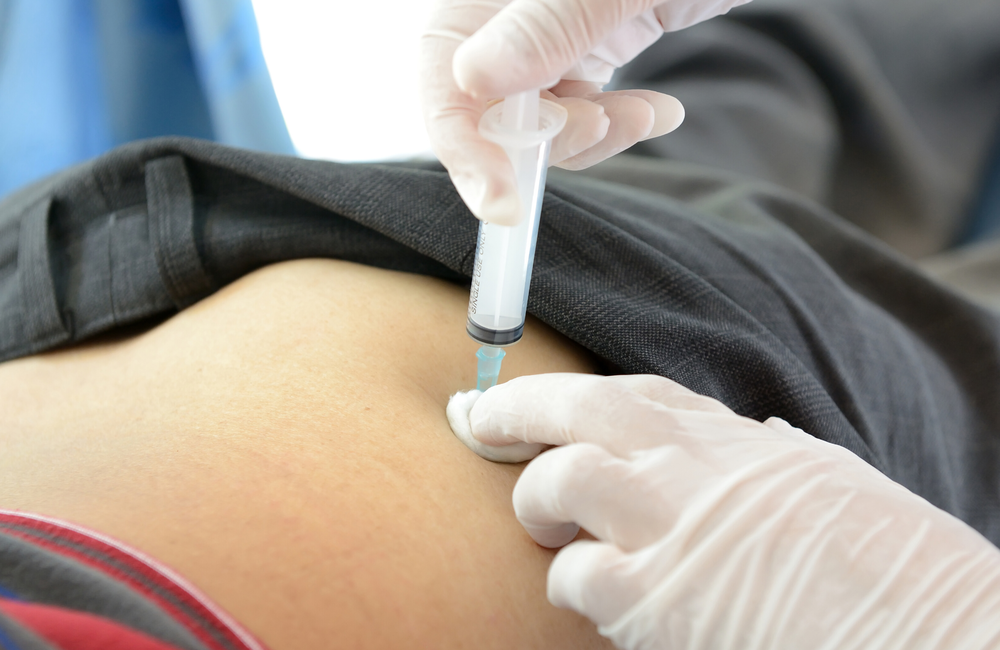
The news that a trial of an injectable formulation of PrEP was stopped early due to high efficacy has been greeted by Science magazine as “Not an AIDS vaccine, but it may be the closest thing to one so far.”
The early termination of the HPTN 083 study is good news – and may fundamentally change the nature of HIV pre-exposure prophylaxis, and indeed of all HIV prevention.
If a treatment or prevention trial is stopped early, it means the news is either very good or very bad. It means the new intervention is either harmful, pointless – or so good, it would be unethical not to offer it.
In a recent trial of an HIV vaccine, it was bad: the vaccine was no better than the placebo. Conversely, when back in 2015 the PROUD and IPERGAY trials both showed that PrEP stopped 86% of HIV infections, they almost overnight changed the image of PrEP from an intervention with promise, to one with undeniable benefit.
In HPTN 083, a large and carefully designed trial, injections every two months of the drug cabotegravir stopped 69% more HIV infections than what has been up till now, state-of-the-art PrEP, namely a daily dose of the pill formerly known as Truvada – tenofovir disoproxil fumarate plus emtricitabine (TDF/FTC). This is despite the fact that, as measured by drug levels, adherence to TDF/FTC was high, with three-quarters taking it every day.
In the trial, 4600 gay and bisexual men and transgender women in the US and also in sites in Argentina, Brazil, Peru, South Africa, Thailand and Vietnam were randomised to received either
- Injectable cabotegravir (an injection in the buttocks every two months) plus 'dummy' daily placebo TDF/FTC pills or
- Daily oral TDF/FTC pills plus a 'dummy' cabotegravir injection every two months.
There was also a 'lead-in' phase of nine weeks. For those randomised to the cabotegravir arm, this involved cabotegravir pills plus dummy TDF/FTC pills. Those in the control group received TDF/FTC pills plus dummy cabotegravir pills. The plan had originally been to finish the study with 48 weeks of oral TDF/FTC to cover the period where cabotegravir levels were slowly dropping, as this has previously led to cases of cabotegravir resistance arising. Now all participants will be offered continuation with injectable cabotegravir.
The study started in November 2016, and was three years long. It was nearing its closure when the COVID-19 pandemic intervened, forcing eleven of the 43 trial sites to close. The trial investigators in April asked the trial’s Data, Safety and Monitoring Board (DSMB) to see if it might be possible to end the trial early, by using the more relaxed threshold of 'non-inferiority' for injectable cabotegravir rather than 'superiority'.
When the DSMB – who are the only people to see a study’s unblinded data – reported back, they said it was not only possible, but that CAB-LA’s results were so convincing that all trial participants should now be offered the injectable PrEP as it prevented more infections.
Results
Of the 4600 people in the study, 12% were transgender women – the highest proportion so far in any large HIV prevention study – and over 50% of people at the US sites were African American.
Fifty became infected with HIV: 12 receiving the cabotegravir infections and 38 taking TDF/FTC pills seroconverted.
This equated to 1.21% annual HIV incidence in participants taking TDF/FTC but only 0.38% in people on the cabotegravir injections – meaning that there were 69% fewer seroconversions in the injection arm.
The reason may be due to adherence. The ViiV press release says that in a sub-study of drug levels in 400 people taking TDF/FTC, 87% of people on the pills had a level of more than 0.31 nanograms per millilitre (ng/ml) of tenofovir in their blood. But this is only indicative of one pill or more a week being taken – not the four-pills-a-week threshold that has come to define efficacy in oral PrEP. However, ViiV's Alex Rinehart told aidsmap.com that 75% of people in this substudy had levels indicative of daily dosing and 83% levels indicating at least four pills a week – so the majority had high adherence.
The 12 people infected on cabotegravir are currently a puzzle. Were they infected during the ‘lead-in’ phase? Or were they in a subgroup with unusually low levels of cabotegravir in their body? This and many more research questions will be answered in the coming months.
"The early termination of the HPTN 083 study may fundamentally change the nature of HIV pre-exposure prophylaxis, and indeed of all HIV prevention."
The injections are not without side effects. Eighty per cent of people receiving the cabotegravir injections complained of soreness or tenderness at the injection site, and this is partly due to the drug, as only 30% of those receiving placebo injections did. However, only 2% of injection recipients stopped having the jabs because of this.
The results are statistically convincing. Although the study was rejigged as a non-inferiority one, the 95% confidence intervals for the two different interventions did not overlap. What this means is that statistically speaking, if you were to run the study unaltered 20 times over, annual HIV incidence in people taking the TDF/FTC pills would be expected to range from 0.86% to 1.61%, and in people receiving the injections it would range from 0.2% to 0.66%. This is a clearly significant result.
A companion study, HPTN 084, is comparing the injections to pills in 3200 women in Botswana, Eswatini, Kenya, Malawi, South Africa, Uganda and Zimbabwe. This started a year later, in November 2017, and was due to finish in 2021, but researchers believe they may have statistically meaningful results by this November.
Alex Rinehart told aidsmap.com: “The recommendation from the DSMB to continue HPTN 084 was very clear, as we don’t have enough data accumulated yet. Fortunately, disruption due to COVID-19 has been less than in HPTN 083.”
ViiV is planning for “global scale up” of injectable cabotegravir and to have it accessible in low-resource settings. The company has not yet made anything public about how and where it’s likely to be made available, and at what cost.
Nonetheless, as one of the principal investigators, Myron Cohen, told Science magazine, “This agent really could contribute to the goal of ending AIDS by 2030.”
ViiV Healthcare Press Release at https://viivhealthcare.com/en-gb/media/press-releases/2020/may/global-hiv-prevention-study-to-stop-early-after-viiv-healthcares/
'Long-acting injectable drug prevents HIV infections'. Science, 18 May 2020.
Update: Following this article, this research was published in a peer-reviewed journal:
Landovitz RJ et al. Cabotegravir for HIV Prevention in Cisgender Men and Transgender Women. New England Journal of Medicine, 385: 595-608, August 2021. DOI: 10.1056/NEJMoa2101016

